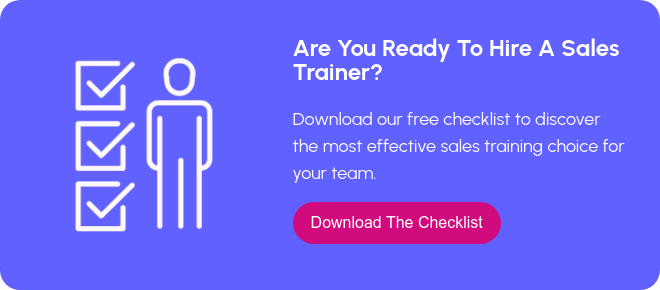Sellers, Don’t Kill Your C-Level Meetings
In the first of the sales fails series, our sales pro gave the advice to stop hiding behind email in order to build relationships, earn trust and close deals faster.
This week’s expert advice comes from the founder of Top Lines Sales, Lisa Magnuson, Top Line Deal Coach. Lisa’s advice is a great recommendation for something else to stop hiding behind.
When I asked Lisa,
If you could tell sales professionals to stop doing this one thing what would it be?”
Lisa’s advice:
Sellers should stop using PowerPoint presentations for executive or C-level meetings. Executives want sellers who can speak to them directly without the aid of a power point. A quote (paraphrased) from the CEO of a Fortune 50 company, ‘'If you must use a PowerPoint, send it to me in advance or after our meeting. During the meeting, bring valuable ideas, listen and stay flexible to where the conversation may take us.'”
This advice will probably put a lot of sales pros out of their comfort zone.
Its’ easier to roll into a meeting feeling secure with your backup props to make sure you didn’t miss anything. Reading through all the points on your presentation makes you thorough, right?
CEO's and High-Level Executives Don't Want A PowerPoint Meeting
They want to know what’s inside your head! What you think and what you can contribute to how and why they make their decision.
Executives are paid to evaluate risk, analyze the potential business outcomes and make decisions. A one-way presentation laid out on PowerPoint is probably not worthy of an executive’s time.
Having a discussion to help them work through their criteria and add value to their process...that is worthy of a CEO or executive’s time and energy.
What Can You Do Next Time You Land a Meeting with a High-Level Decision Maker?
Help them make better decisions:
- Be prepared. If it makes you feel better, go ahead and create your presentation. Use it to be well versed in your client’s company, their problems, their industry, the market, et cetera. Don’t take it with you; use this process for preparation only.
- Have insights, opinions, and real value. Don’t come with the features and benefits memorized from your company brochure. Offer up real examples and actual case studies from your clients. What do you think? What have your clients experienced? How do you think your solution can address these specific problems? What would you advise them to do in their situation?
- Know the next steps, in all directions. By asking questions and having an in-depth conversation, you learn more, understand deeper and have greater insight as to what the next steps are for your client. It may be they need to see a demo. Or, perhaps connecting them with one of your clients for a reference. Maybe it’s time for a beta test, write a proposal or introduce your production team to push them over the edge. Having a conversation will help you determine which next steps are right for the client as opposed to writing them in stone in your proposal.
- Demonstrate leadership and confidence. Discussions with top executives are your opportunities to give them a preview as to how you will treat them as your client. Coming prepared to have peer to peer conversations, engaging dialogue with questions, learning and education shows you are confident in your abilities and have the leadership skills to move the solution forward with your client. This opportunity can be one of your differentiating factors that helps your customers make better purchasing decisions and helps them buy you.\
Don't Blow Your Next C-Level Meeting!
When you land your next meeting with the C-level decision maker, don’t blow it by undermining your credibility and lessoning your value with a one-sided PowerPoint presentation.
.webp?width=12693&height=4513&name=Sauce%20Logo%20Dark%20Ht%20(1).webp)

.webp?width=180&height=64&name=Sauce%20Logo%20Dark%20Ht%20(1).webp)











